I’ve been fascinated by the mating displays of American Avocets ever since I first started photographing them almost five years ago. This innate and complex choreography is almost identical in different mated pairs and from year to year. The action happens quickly and is difficult to photograph well but I think I have enough decent images now to make an informative post about it. Not all of the photos are of the highest quality but I think each of them illustrates the behavior well. I’ll present several sequences of different birds that will illustrate most of the important stages of the process.
I’m not going to include my techs with these shots -some of them were taken when I first started photographing birds and I made many mistakes in my setting choices. Knowing some of these settings wouldn’t help anyone.
Avocets are monogamous and pairs form up in the spring when the female persistently associates with the male until she is eventually tolerated, then accepted as a mate. The female initiates copulation by the posture you see above. It’s called Solicitation Posture and in it she holds her neck extended far out and low. At times it’s so low that much of the head, bill and neck are under water as you’ll see in a later image.
Once interested, the male performs Sexual Preening where he stands close to the female and extends his neck so that his bill tip can preen his breast (always on the side closest to her). You’ll see that part of Sexual Preening in a later image but water is also used in in this specialized preening process where he places his bill in the water and stirs it around vigorously (as you see here) and then brings the water in his bill to his breast. The water splashing becomes more intense just before copulation.
I find nothing about it in the literature but every time I’ve seen these birds mate, just as the male is about to mount her he places his bill on the side of her neck like this (you’ll get a better look in another image). I wonder if it’s just part of the ritual, perhaps to stimulate her, or maybe a way to help him stabilize himself as he tries to mount her.
Here the bill of the male is still pressed against the side of her face as he mounts her.
The back of the female must be an unstable staging platform for the male so he rests his tarsometatarsi on her back to help stabilize himself during the process. I missed the actual “cloacal kiss” in this sequence because my buffer had filled up. Wouldn’t you know…
To many, perhaps the most endearing stage of this mating display is immediately after copulation where the birds always (in my experience at least) briefly cross bills like this and the male places his wing over the female in an almost loving way. Here the left wing of the male is wrapped completely over her back but it’s difficult to make out. Another image will show it more clearly.
Here’s another sequence of different birds to show some of the stages from a different angle and hopefully more clearly. In this shot the male is splashing his bill in the water as part of Sexual Preening and the female is in her Solicitation Posture.
A better look at the way the male presses his bill against the side of her neck/face as he mounts her.
As I said before the females back is certainly an unstable platform and in this case the male fell forward off of her. Made me laugh and feel sorry for them at the same time.
Another look at the Solicitation Posture of the female and the male doing the breast preening part of Sexual Preening. Notice that he always preens on the side closest to the female.
A different view of the bill crossing after copulation. Here the wing of the male being held over the back of the female is very obvious.
Though not part of the mating display I decided to include a few images that illustrate some of the natural conclusions to the mating behaviors. In this photo the mated pair are constructing their nest. The female is on the nest while the male is picking up potential nest building material. Sometimes he would toss it away after picking it up and other times he would deliver it to her and she would arrange it on the nest.
Incubating the eggs.
The eggs being turned.
The end result of all of this is a cute little ball of fluff with huge legs and feet. I’ve always found it to be extremely difficult to get a catch light in the eye of these young chicks. Don’t know why…
I didn’t have good light for this one but if you count legs you’ll see that there are four birds here.
I want to be clear that I never approached or disturbed adults or chicks to get these images. I never got out of my pickup and was always on the main road through the refuge where the shots were taken. Never did I see any sign that these birds were uncomfortable with my presence.
Ron


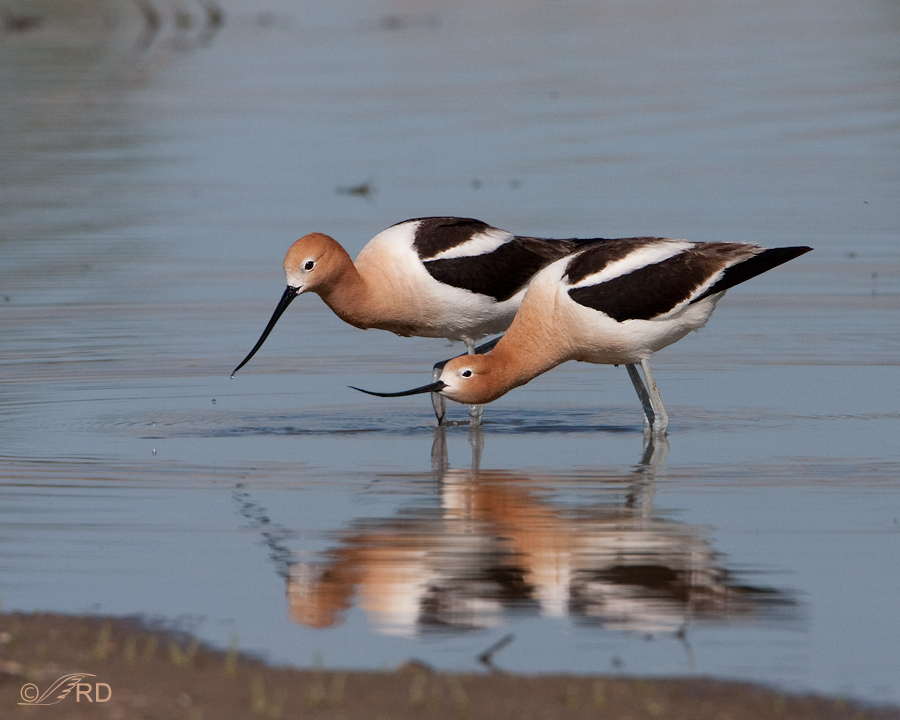
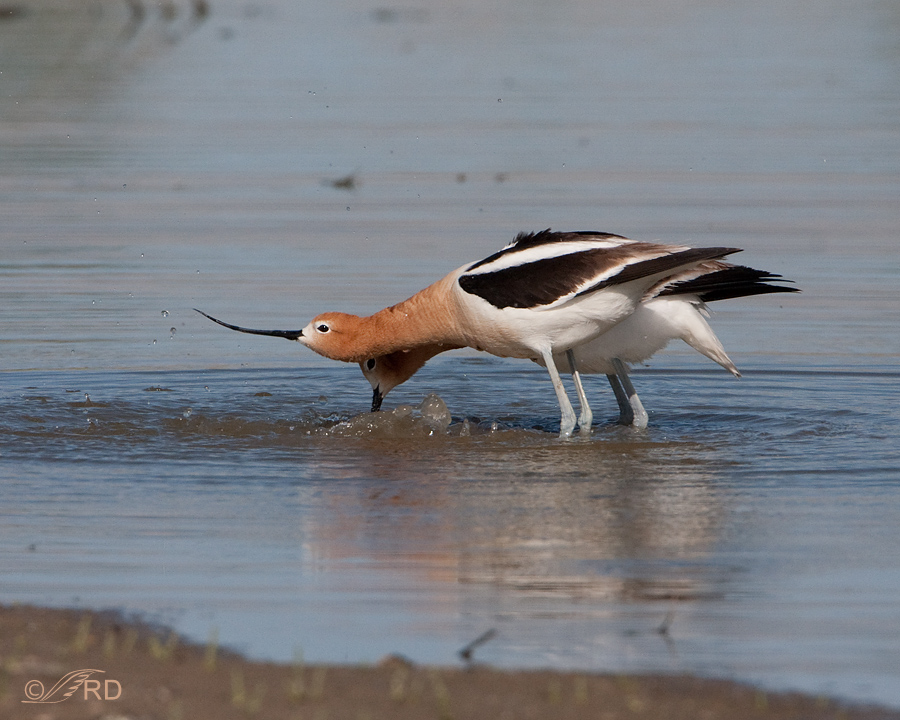
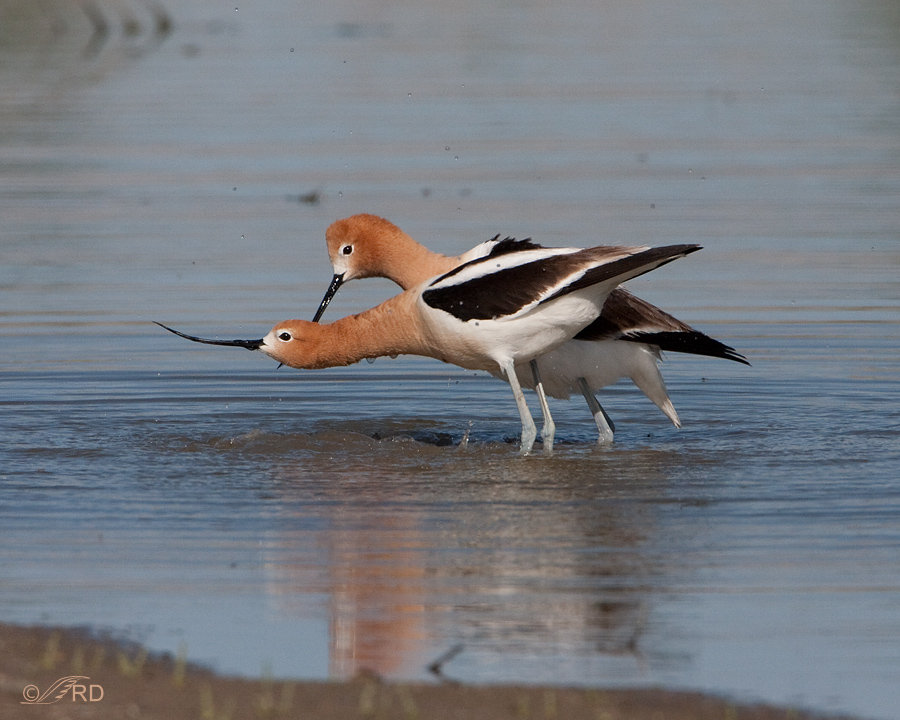
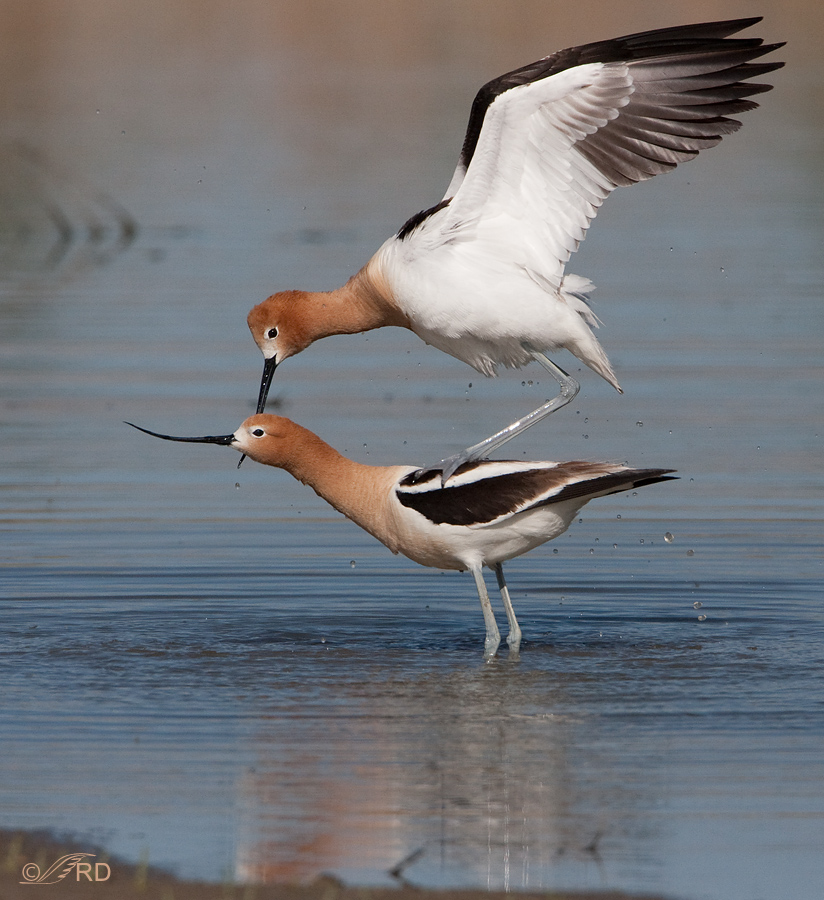
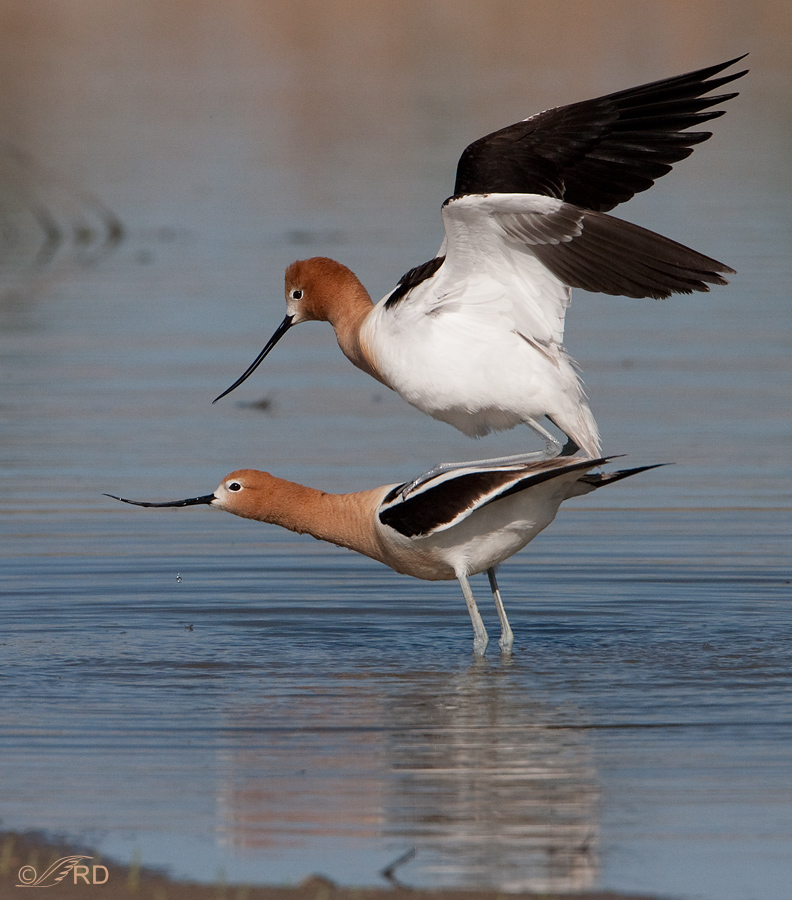
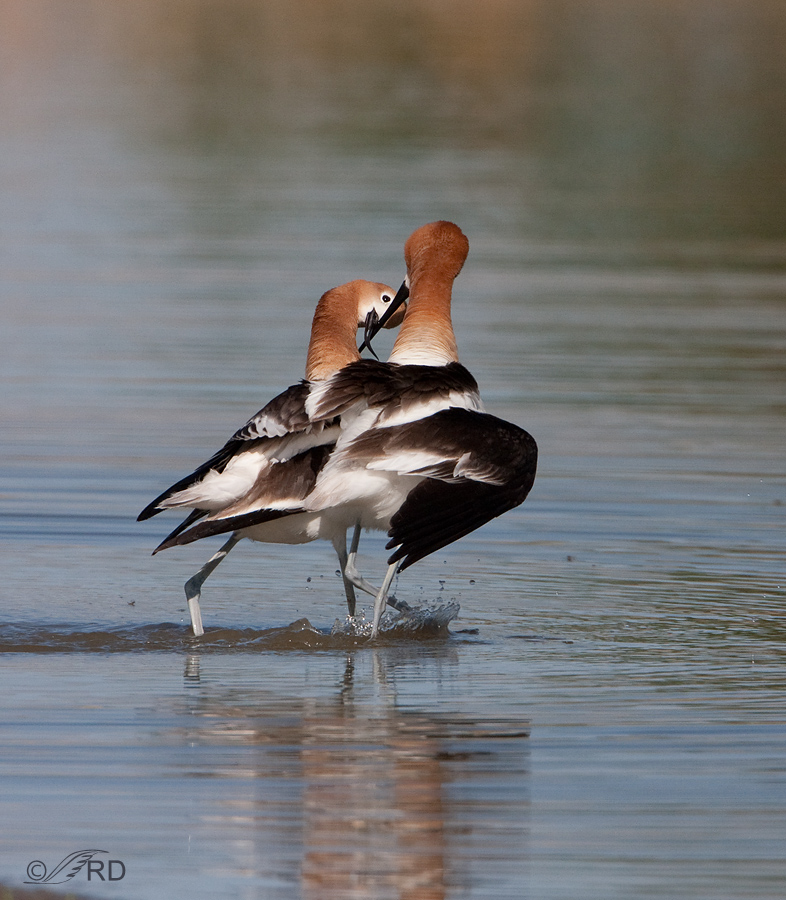
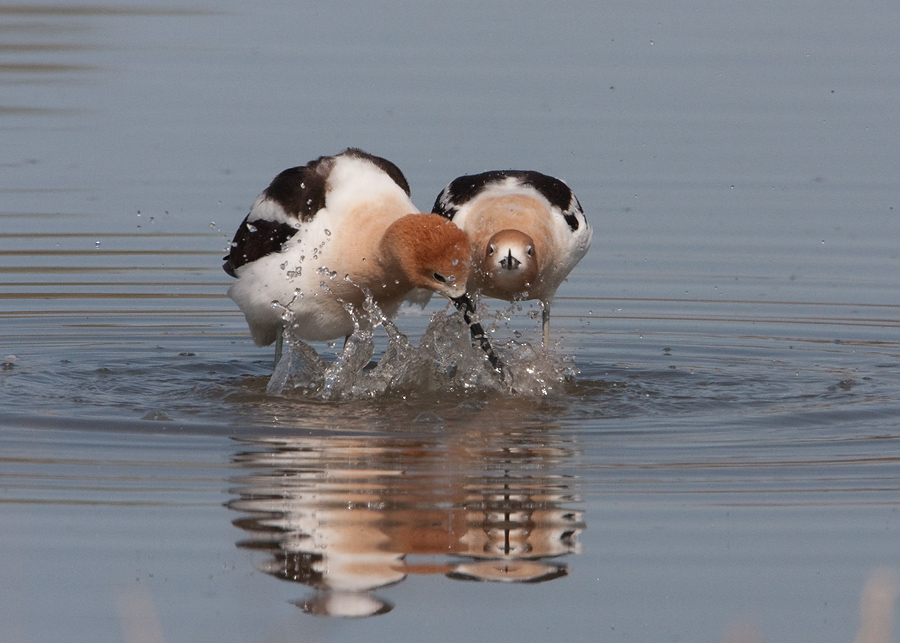
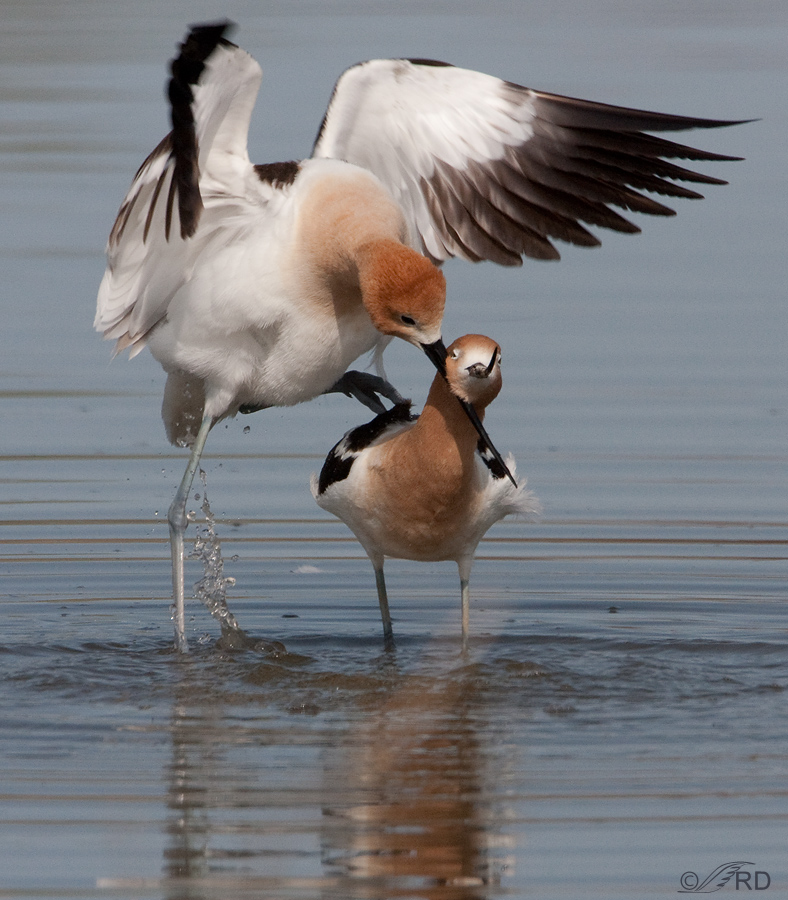
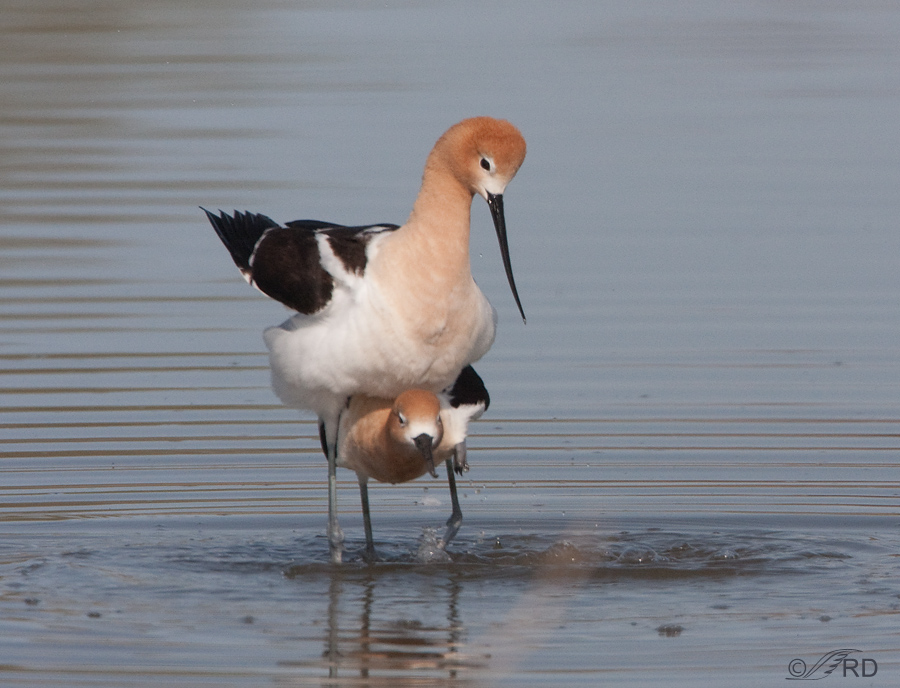
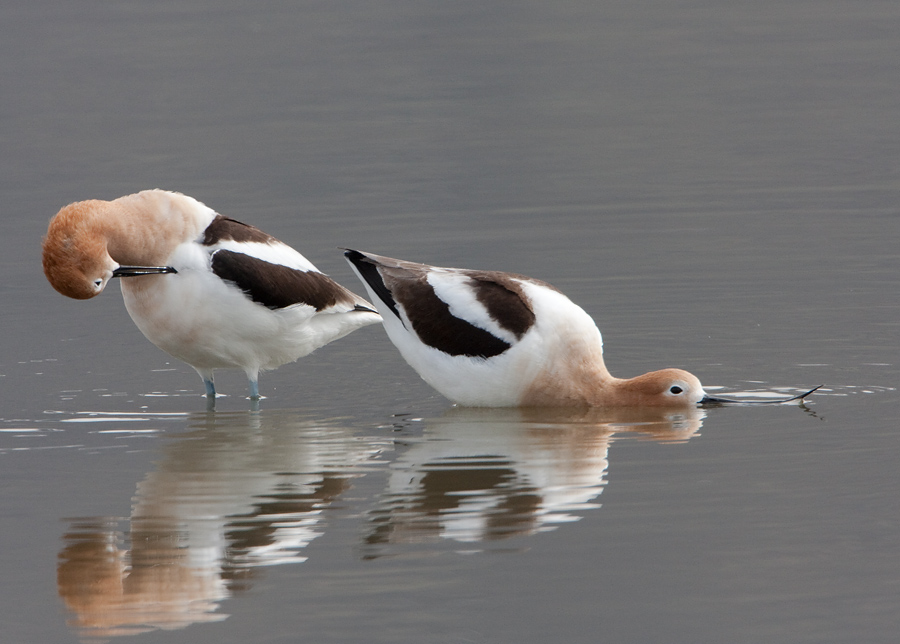


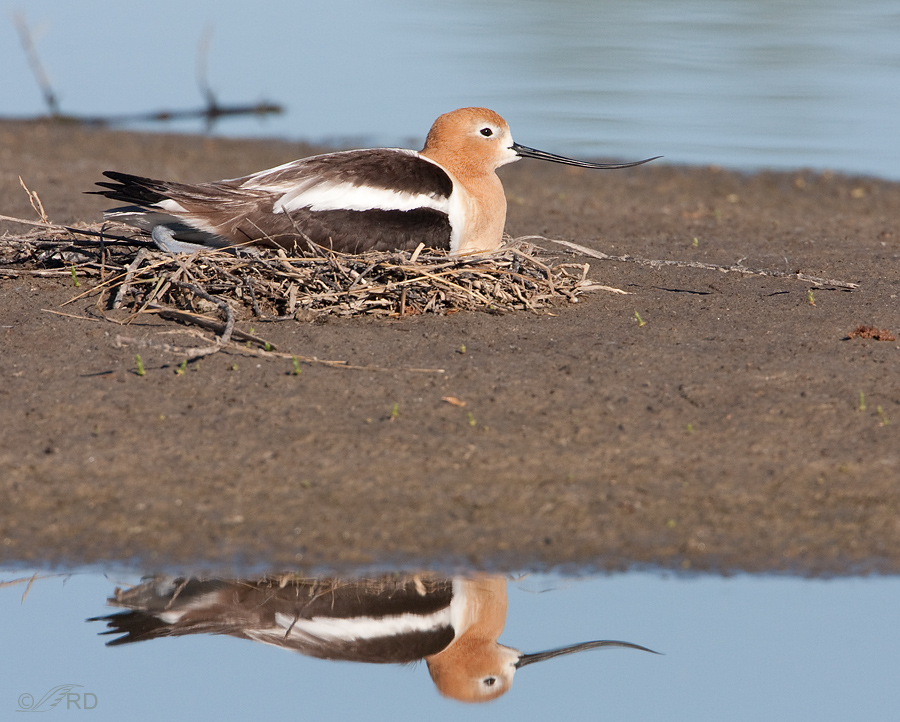

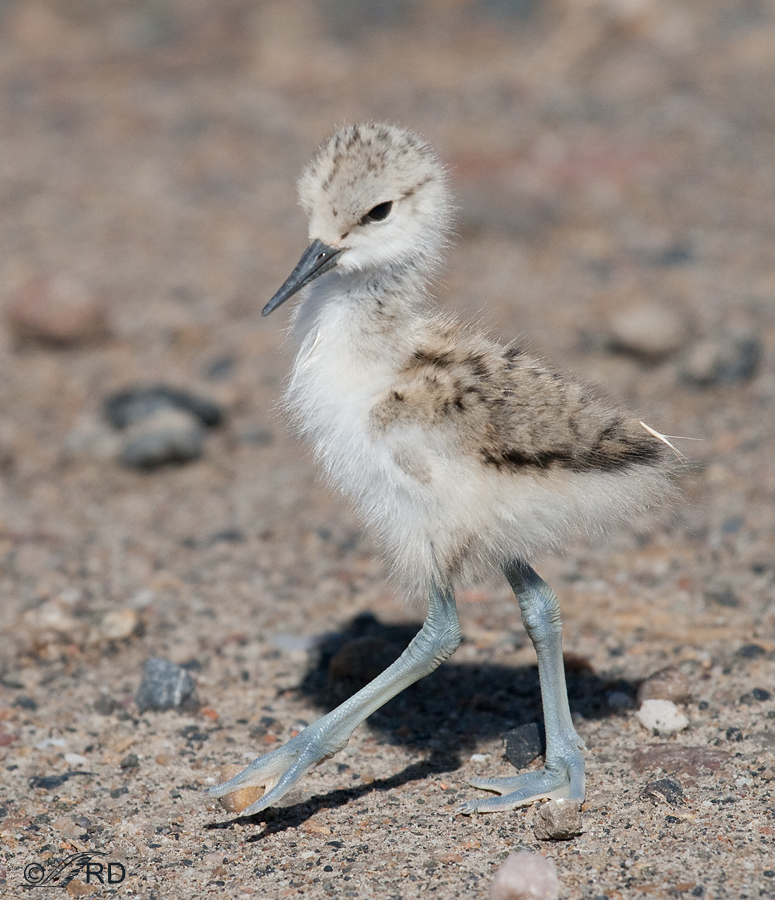
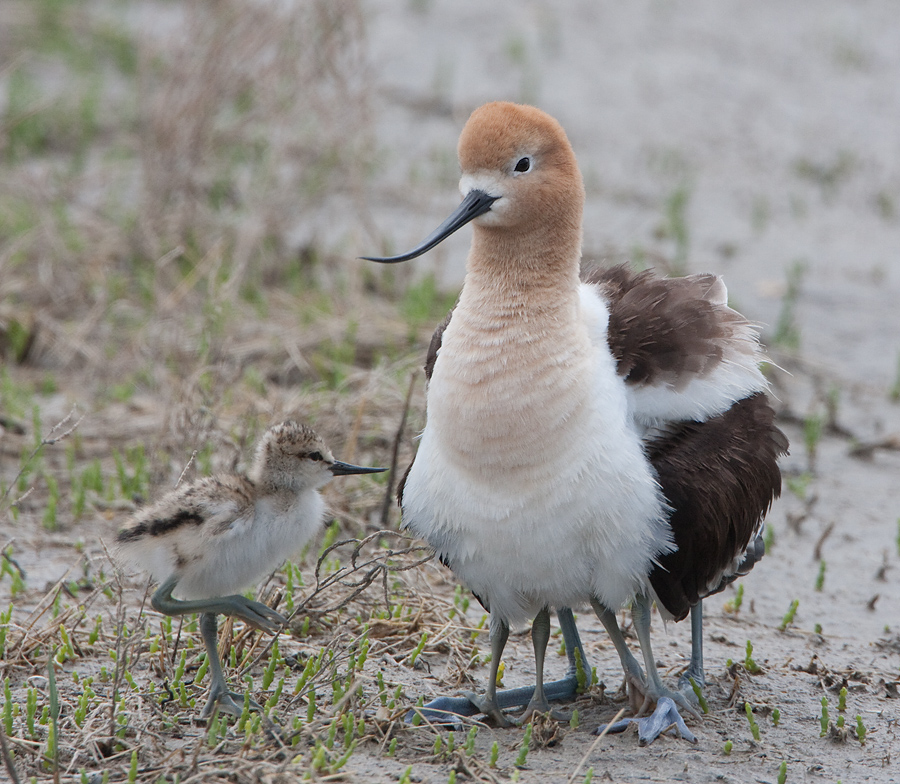
Did you every notice any larger group displays? It is May 14 here in Nevada, and I just noticed five Avocets in a circle, all facing the middle, with their heads down and tips of their bills near the surface of the water, but they were not feeding or dipping bills below the surface. Some of the birds chattered, and the circle moved around (birds on the “forward” side of the circle had to walk backwards.) Every few seconds, one of the birds would jump in the air, flapping, and make a small move towards another bird in the circle, but after this disruption the circle would form again and the birds resumed their posture. The visual effect of the circle moving, with all birds seeming to peer down into the water, was that they had something under the water encircled, like a fish or something, and were following it around. But as I say, never did any of the birds appear to actually go after anything under water. I believe this was some sort of preliminary mating display, jostling for partners or something.
Regards,
Brian
Brian, yes I usually see this behavior several times every spring. It’s called the “circling display”. It’s an aggressive territorial display between several pairs of avocets that usually occurs when one mated pair arrives on the established territory of another pair.
Terrific sequence. You captured them well.
Oh wow. As always as visit to your blog fills me with awe, and joy at the beauty of the birds you have captured for us. Thank you so much.